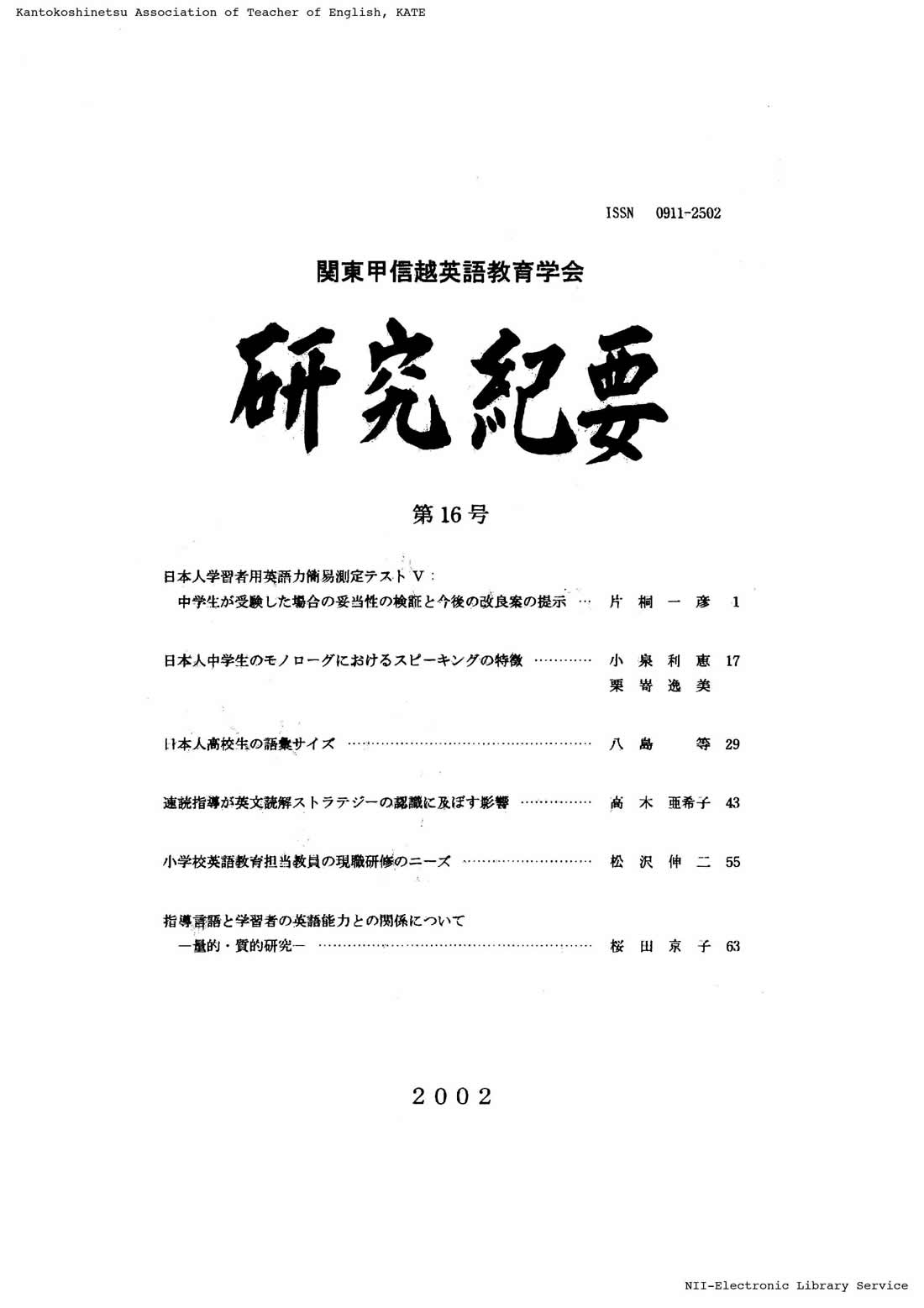Volume 16
Displaying 1-13 of 13 articles from this issue
- |<
- <
- 1
- >
- >|
-
Article type: Cover
2002 Volume 16 Pages Cover1-
Published: March 01, 2002
Released on J-STAGE: July 14, 2017
Download PDF (26K) -
Article type: Cover
2002 Volume 16 Pages Cover2-
Published: March 01, 2002
Released on J-STAGE: July 14, 2017
Download PDF (26K) -
Article type: Article
2002 Volume 16 Pages 1-15
Published: March 01, 2002
Released on J-STAGE: July 14, 2017
Download PDF (999K) -
Article type: Article
2002 Volume 16 Pages 17-28
Published: March 01, 2002
Released on J-STAGE: July 14, 2017
Download PDF (1219K) -
Article type: Article
2002 Volume 16 Pages 29-41
Published: March 01, 2002
Released on J-STAGE: July 14, 2017
Download PDF (1127K) -
Article type: Article
2002 Volume 16 Pages 43-53
Published: March 01, 2002
Released on J-STAGE: July 14, 2017
Download PDF (883K) -
Article type: Article
2002 Volume 16 Pages 55-62
Published: March 01, 2002
Released on J-STAGE: July 14, 2017
Download PDF (646K) -
Article type: Article
2002 Volume 16 Pages 63-76
Published: March 01, 2002
Released on J-STAGE: July 14, 2017
Download PDF (1004K) -
Article type: Appendix
2002 Volume 16 Pages App1-
Published: March 01, 2002
Released on J-STAGE: July 14, 2017
Download PDF (38K) -
Article type: Appendix
2002 Volume 16 Pages App2-
Published: March 01, 2002
Released on J-STAGE: July 14, 2017
Download PDF (38K) -
Article type: Appendix
2002 Volume 16 Pages App3-
Published: March 01, 2002
Released on J-STAGE: July 14, 2017
Download PDF (38K) -
Article type: Cover
2002 Volume 16 Pages Cover3-
Published: March 01, 2002
Released on J-STAGE: July 14, 2017
Download PDF (32K) -
Article type: Cover
2002 Volume 16 Pages Cover4-
Published: March 01, 2002
Released on J-STAGE: July 14, 2017
Download PDF (32K)
- |<
- <
- 1
- >
- >|
